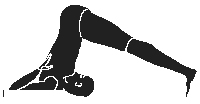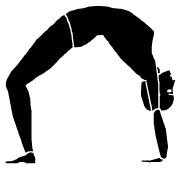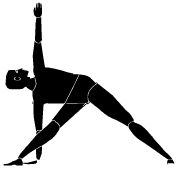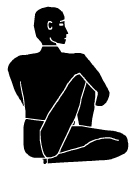Introduction

Cholesterol may cause problems if you get too much in your food. The extra cholesterol can lead to blocked arteries. Our liver also produces cholesterol, about 1000 milligrams per day, as the same is needed to make vitamin D and some hormones, build cell walls, and create bile salts that help us digest fat. Cholesterol cannot travel alone in the blood. It combines with certain proteins and forms lipoprotein. The two important types of lipoprotein are High Density Lipoproteins (HDL) and Low Density Lipoproteins (LDL). The later category is injurious and causes blood vessels to clog and inhibits blood from flowing freely through the vessels. On the contrary, HDL cholesterol is also known as 'good' as it carries the cholesterol back to liver for re-processing. But unfortunately the percentage of HDL cholesterol is less than the LDL ones, in a ratio of 1:3.
Comprehensive studies done on large populations in the past 15 years have proved that reducing cholesterol and keeping the blood pressure under check can significantly reduce coronary artery diseases. There was a time when a total cholesterol level of 240 mg was considered normal. But by 1986 itself, the threshold was fixed at 200 mg. In recent times, though the threshold for total cholesterol has remained at 200 mg, the cut-off point for LDL or bad cholesterol has been lowered to 75 mg.
Yoga and Cholesterol
Yoga is an ancient form of relaxation and exercise that has many healthy benefits, including lowering cholesterol. The Buffalo Centre for Integrated Medicine reported in January 2005 that relaxation techniques and specifically yoga can help in lowering LDL cholesterol which is the "bad" cholesterol in the blood that is produced by the liver. Scientists in general have made the connection between higher stress levels and an increase in LDL cholesterol levels. Yoga takes care of lowering stress, which results in lower cholesterol. The practice of yoga improves the blood and oxygen flow around the body which aids in the removal of toxins and waste. For yoga to be truly beneficial to the lowering of your unwanted bad cholesterol it must be practiced on a regular basis. Preliminary yogasanas can help to bring down the level of bad cholesterol in an affected individual. Cholesterol rises with greatly with stress.Yoga gives you the best way to relive your stress and reduces stress hormones, which in turn lowers cholesterol. A study showed that those who received instruction on yoga techniques, lifestyle recommendations and a healthy diet had a 23% drop in cholesterol-from 247 to 185-compared with 4% among those who did not. The yoga- practicing group also had a 26% drop in low-density lipoprotein, known as bad cholesterol, compared with 3% in the control group. The weight loss and conditioning that come with regular yoga practice also tend to lower triglyceride levels and boost HDL, high levels of which protect against heart attacks.
YOGA POSES FOR CHOLESTEROL
Sarvangasana (Shoulder Stand)
This yoga pose is for thyroid & parathyroid glands, located in the neck region, since due to the firm chin-lock in sarvangasana their is increased fresh blood supply to this glands. This ample supply of blood increases their working efficiency. These glands regulate protein, carbohydrate and fat metabolism, affecting how human cells use energetic compounds.Ardha Matsyendrasana (Half Spinal Twist)
This yoga therapy is for abdomen and internal organs receive a deep internal message, helping to squeeze out toxins, stimulate digestion and supply organs with fresh circulation upon release.Shalabhasana (Locust Pose)
This yoga position will strengthen lower back muscles and increasing the flexibility of the back. It improves liver function, it keeps cholesterol under control, cures constipation and dyspepsia, alleviates gastric ailments. It reduction of excess fats around the hips, waist, thighs, and abdominal area, making the waist more resilient, stimulation of the solar plexus, massaging the heart and other internal organs.Vajrasana
This yoga pose makes the body exceptionally strong and healthy. Vajra means thunderbolt in Sanskrit.Apart from reducing cholesterol this asana has several other benefits. It corrects the disorders of the stomach, Intestine, Liver Kidney, and the organs of the abdomen area by activity and energizing them.YOGA ASANAS FOR CHOLESTEROL
ARDHAHALASANA

Steps
- Lie on your back with feet together. Keep your palms beside the thighs, facing the ground.
- Now inhale and raise your right leg, as much as possible, without bending at the knees. Remain in this posture for some time and while exhaling bring the leg down slowly.
- Then repeat the asana with the left leg.
CHAKRASANA

Steps
- Lie on your back. Bends your legs at the knees and place them nearer to the hips.
- Place the palms by the sides of your head by bending the elbows and fingers towards your body.
- While inhaling, slowly raise your body upward, resting on the feet and the palms, thus curving the spine. Retain the pose for a few seconds and, breathing normally, gradually increase the duration.
- Concentrate on the spine. While exhaling slowly come back and rest in Shavasna for a while.
PARVATTRIKONASANA

Steps
- Stand erect, with legs apart and, while inhaling, spread both hands to the sides parallel to the ground.
- While exhaling, bend the trunk to the front and twist to the left, looking upwards and keeping the left arm at 90 to the head.
- Place your right arm on the left foot without bending the knees. This is the final pose. Maintain it for a few seconds.
- Take a deep breath and, while inhaling, raise the trunk and hand and come to the normal position.
- Repeat the same on the other side.
ARDHAMATSYENDRASANA

Steps
- Sit on the ground, stretching both the legs forward. Bend your right leg and place the heel under the left hip.
- Now bend your left leg, cross it over and place your foot by the side of the right knee. Try to hold the left ankle by passing the right arm over the left side of the left knee. At the same time, exhale and take the left arm behind the back and press the right side under the ribs.
- This has to be done by twisting the trunk to the back as much as possible. Maintain this posture for a few seconds and increase the duration to two minutes gradually.
- Repeat the same process on the other side for the same duration.
PASCHIMOTTANASANA

Steps
- This posture involves stretching of the posterior muscles of the body.
- While sitting, stretch your legs forward and keep them close to each other. Bend a little forward, make hooks of your fingers and hold the big toes on the respective sides.
- While exhaling, bend forward stretching the trunk along the thighs. Rest your on the knees, which should be kept straight.
- Gradually, the tense muscles can be made supple for securing the complete posture. Inhale and return to the original position.
Diseases Related to Aquarius |
||


